
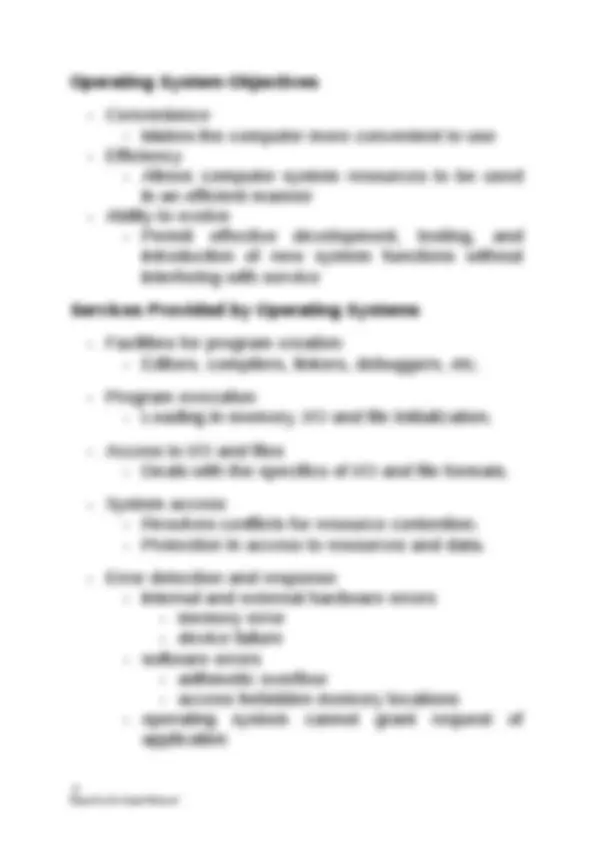
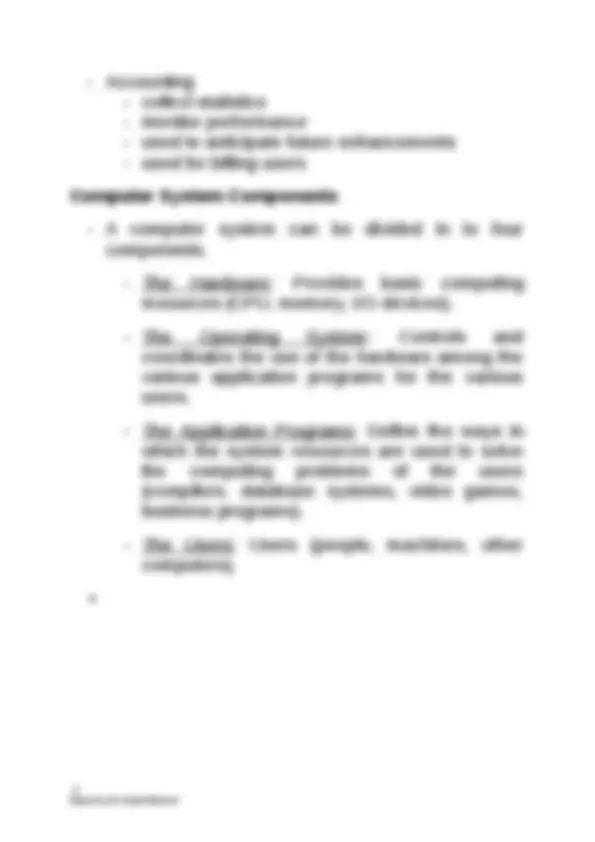

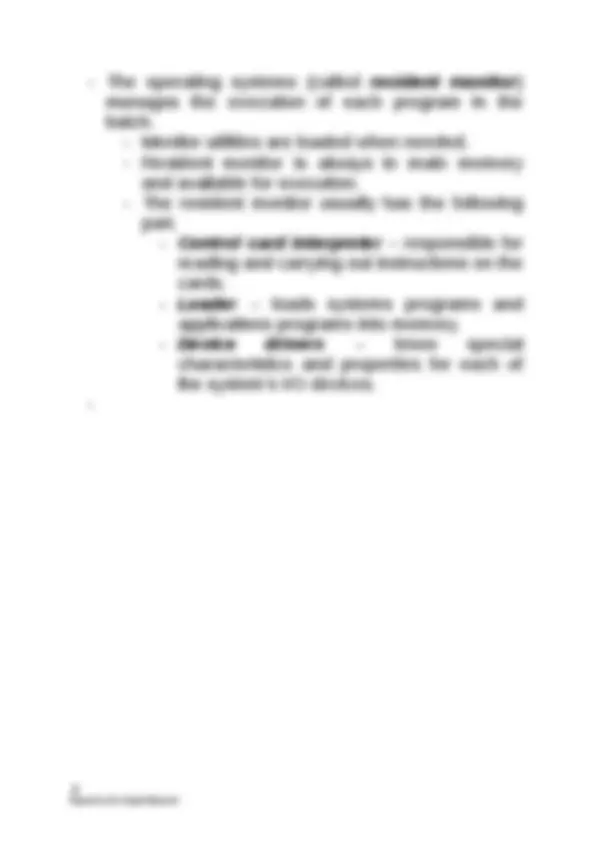
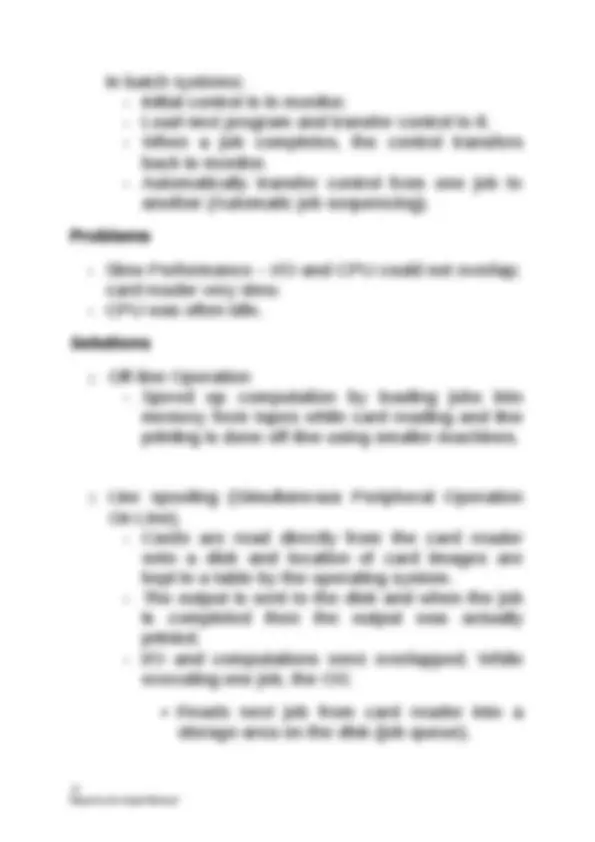
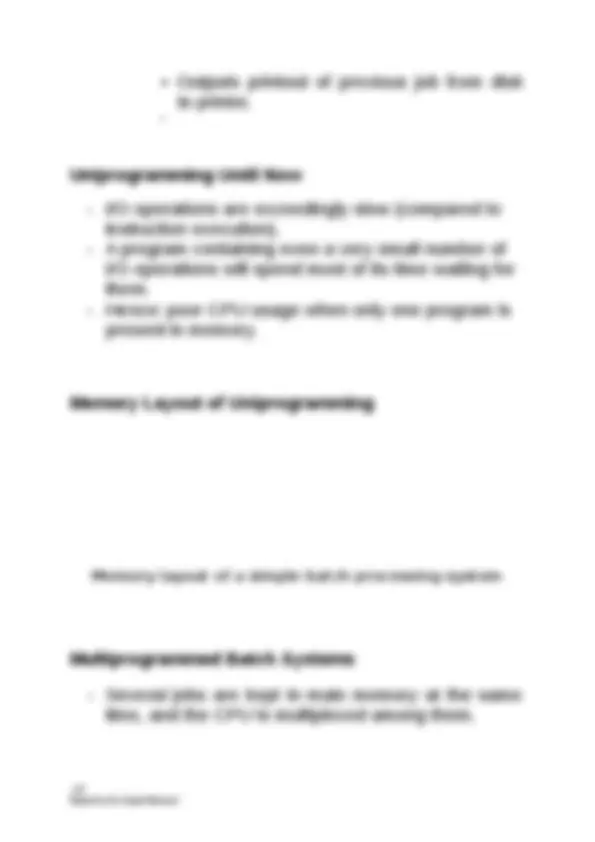
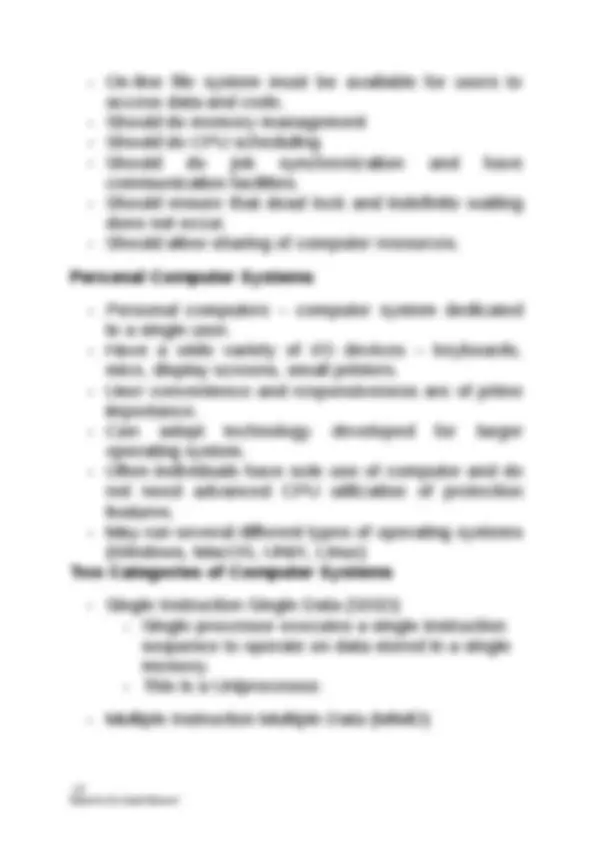
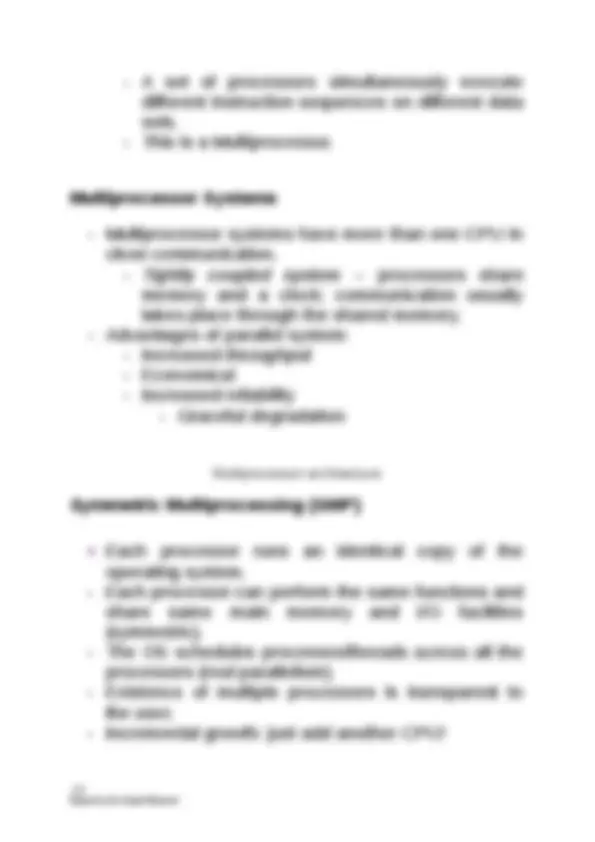
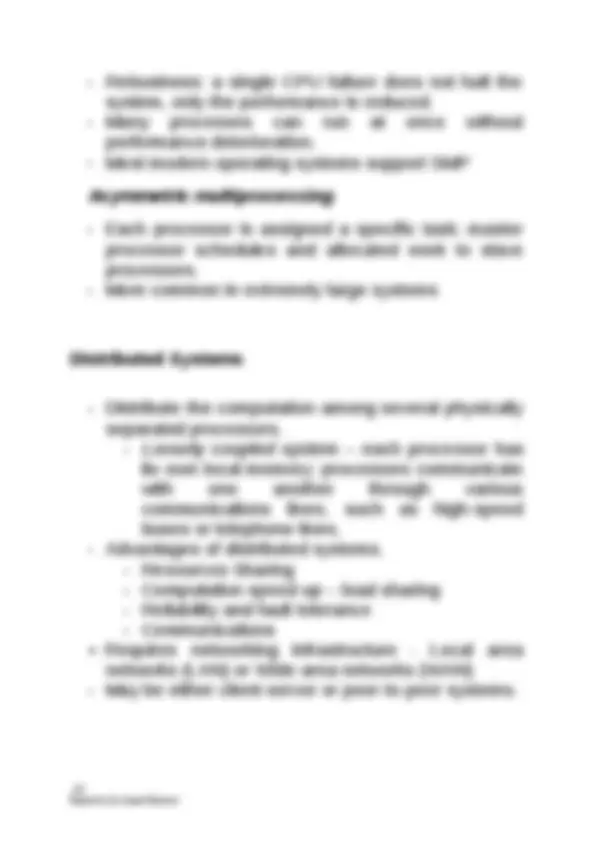





Study with the several resources on Docsity

Earn points by helping other students or get them with a premium plan


Prepare for your exams
Study with the several resources on Docsity

Earn points to download
Earn points by helping other students or get them with a premium plan
Community
Ask the community for help and clear up your study doubts
Discover the best universities in your country according to Docsity users
Free resources
Download our free guides on studying techniques, anxiety management strategies, and thesis advice from Docsity tutors
INTRODUCTION TO OPERATING SYSTEM
Typology: Lecture notes
1 / 20

This page cannot be seen from the preview
Don't miss anything!













Chapter 1 – Introduction to OS
What is an Operating System?
Why Operating System?
Computer System Components
These components can be viewed as layers, where
Early Systems
Simple Batch Systems
The operating systems (called resident monitor ) manages the execution of each program in the batch. - Monitor utilities are loaded when needed. - (^) Resident monitor is always in main memory and available for execution. - The resident monitor usually has the following part. - Control card interpreter – responsible for reading and carrying out instructions on the cards. - Loader – loads systems programs and applications programs into memory. - Device drivers – know special characteristics and properties for each of the system’s I/O devices.
Outputs printout of previous job from disk to printer.
Uniprogramming Until Now
Memory Layout of Uniprogramming
Memory layout of a simple batch processing system
Multiprogrammed Batch Systems
OS Features Needed for Multiprogramming
Time Sharing Systems (Interactive Systems)
Personal Computer Systems
Multiprocessor Systems
Multiprocessor architecture
Symmetric Multiprocessing (SMP)
General structure of client-server
Peer-to-peer systems
Network Operating System
Distributed Operating System
Clustered Systems
Real-Time Systems
Migration of Operating-System Concepts and
Features